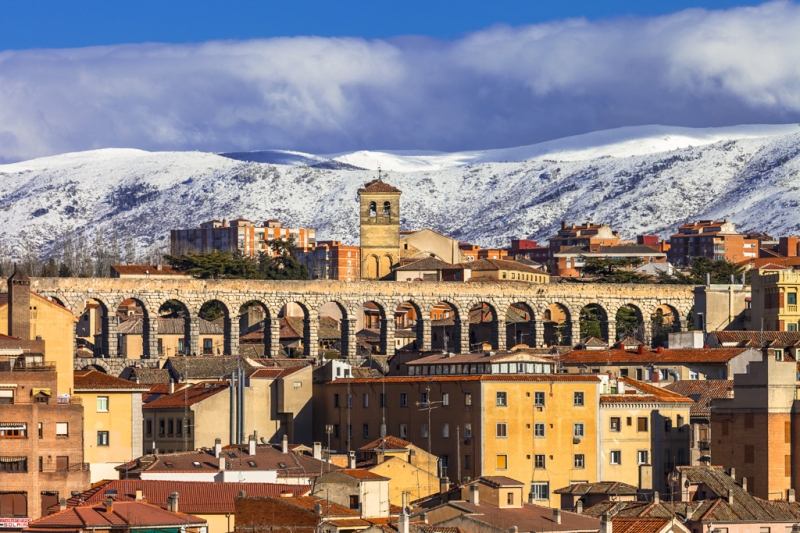
90 kilometers northwest of Madrid is the modest Spanish town of Segovia. It was founded by the Romans in 80 BC and has retained a piece of its historical essence to this day.
Now Segovia is not only the administrative center of a small province of the same name, but also a place of pilgrimage for tourists from all over the world. What is so attractive about this Castilian city? It’s all about its attractions. We will now tell you about the three most famous of them.
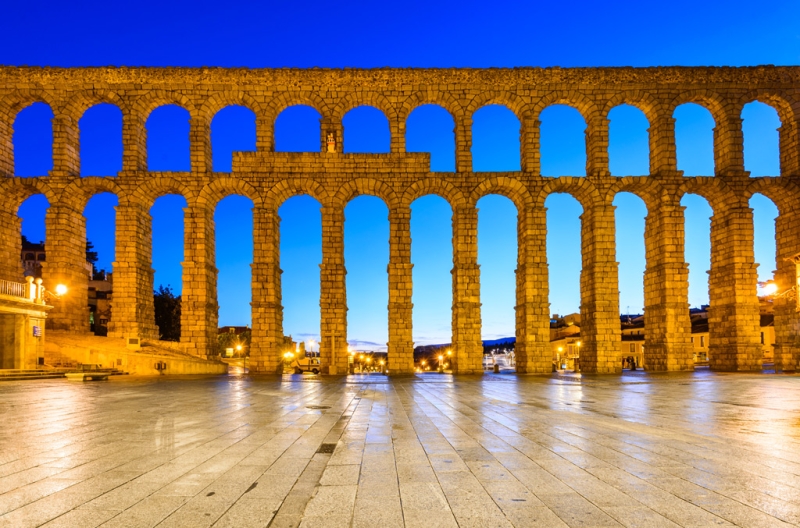
Aqueduct
This is the longest surviving aqueduct in Western Europe. Its length is more than 728 meters. The aqueduct was built during the reign of Emperor Vespasian in the first century AD. Although the exact date of construction is still unknown.
Interesting fact — For a long time there was a legend in the city that the devil himself helped build this aqueduct. According to the residents, it was like this.
There lived a poor girl in Segovia who had to carry water every day to rich aristocrats. At some point, she was categorically tired of all this. Then she turned to Satan for help. The devil agreed to build an aqueduct and relieve her of the need to constantly carry water. The deal was quite standard: help in exchange for a soul. The girl accepted the conditions without much hesitation, putting forward one of her own: the work must be completed before dawn.
They shook hands, and the devil got to work. When the aqueduct was almost built, the girl suddenly changed her mind. Who does not happen to ? She prayed to the Holy Virgin Mary and begged for forgiveness. The prayer had an effect. The devil did not have time to complete the aqueduct and was left with nothing. And the residents of Segovia received an unlimited flow of water from mountain rivers.
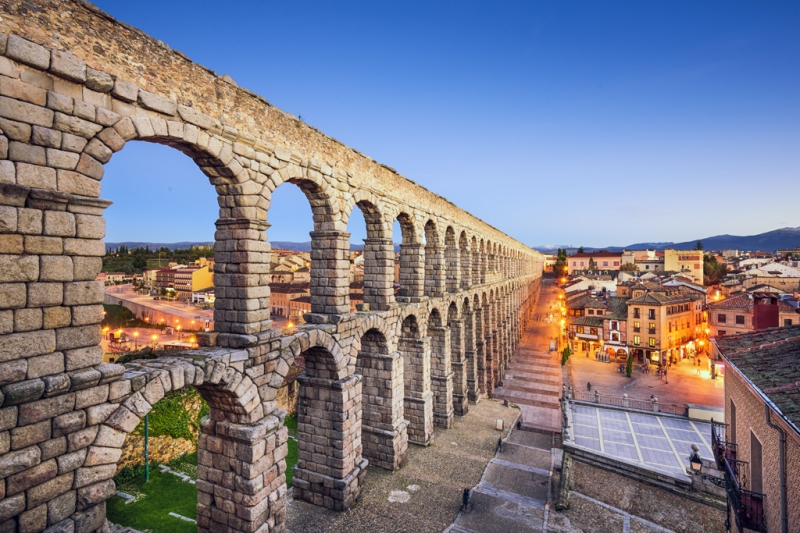
Information for tourists
Price: absolutely free.
What to watch:note the magnificent masonry. The aqueduct consists of 20,400 blocks, which are supported by their own weight. In the evening you can watch bats. They live in crevices between rocks and often fly out.
How to get there: The aqueduct runs right through the city center, you definitely won’t miss it.
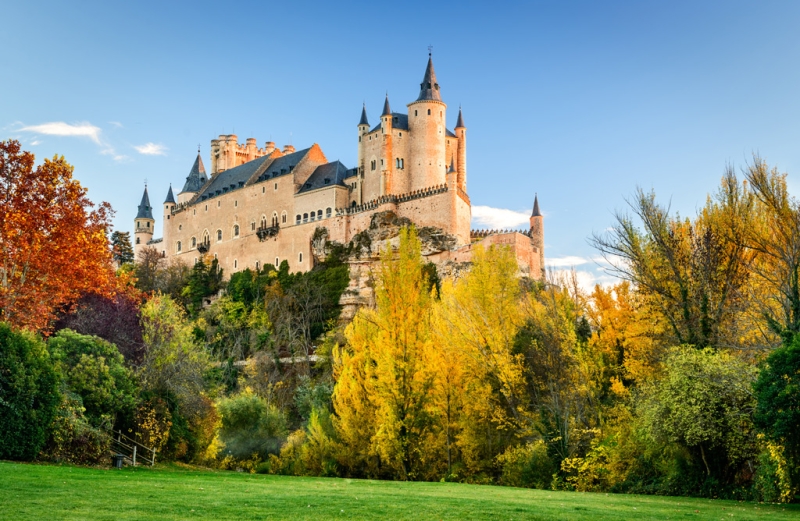
Alcazar Fortress
The magnificent Spanish fortress is located on a cliff near the confluence of the Eresma and Clamores rivers. It was founded at the beginning of the 12th century. In the Middle Ages, the Alcazar was the favorite residence of the Castilian kings. After the royal court moved to Madrid, the fortress became a state prison. This went on for more than two hundred years. In 1762, King Charles III founded an artillery school on the basis of the Alcazar. The fortress entered the 20th century as the building of the Main Military Archive, and since 1953 it received the status of a museum.
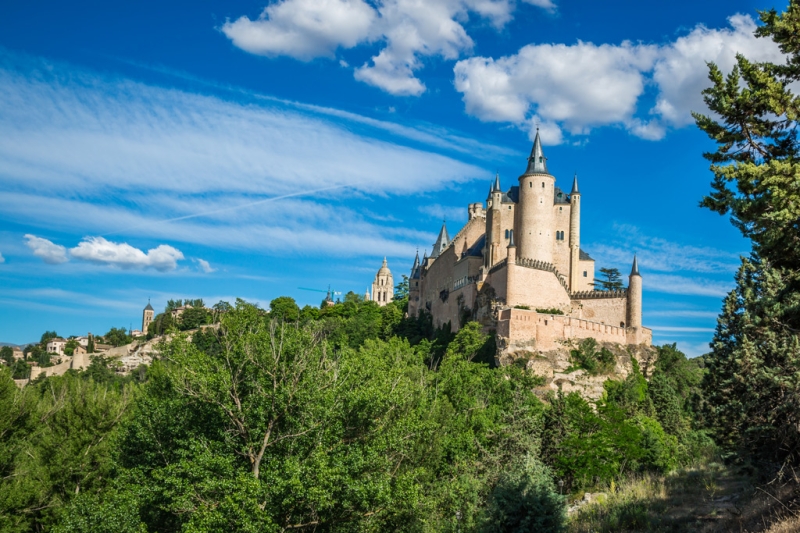
Information for tourists
Cost:
— Palace and Artillery Museum – 5.50 euros;
— Visit to the highest tower – 2 euros;
— Full ticket – 7.50 euros.
What to see: weapons exhibition, historical interiors, works of art.
How to get there: you need to move to the northwest of the city. The entrance to the fortress is located at: Plaza Reina Victoria Eugenia (on the map).
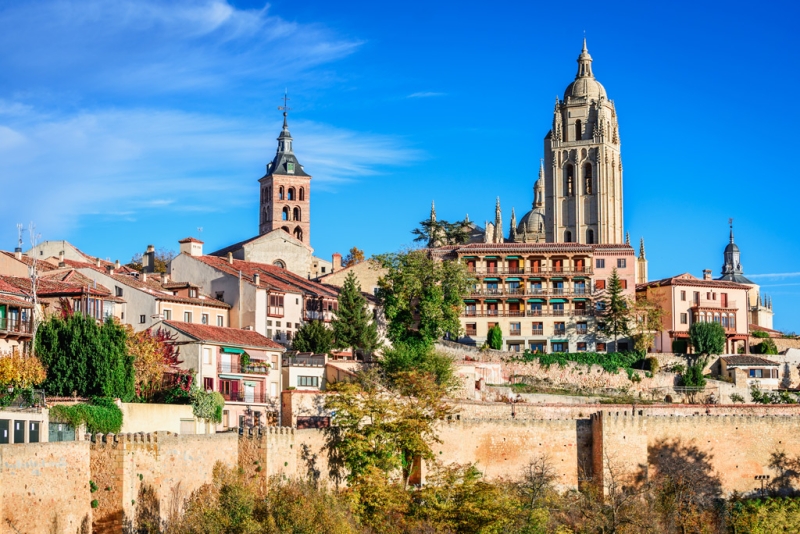
St. Mary’s Cathedral
Segovia became the birthplace of the last Gothic cathedral in Europe. The fact is that it was founded only in 1525. Construction took more than 50 years. It so happened that by the time this large-scale construction was completed, the Renaissance was already in the yard.
The dimensions of the cathedral are impressive: 105 meters long, 50 meters wide, 33 meters high. The bell tower reaches 88 meters into the sky. This is the highest point of the city. It can be seen from almost anywhere. Initially, it was even higher, since the top of the bell tower was crowned with a spire. But in 1614, lightning struck the tower, scaring people and causing a fire. The townspeople considered this a bad omen and replaced the spire with a dome.
At the cathedral there is a museum where you can see rare jewelry, medieval manuscripts and the pride of Segovia – the first book of the city from 1472.
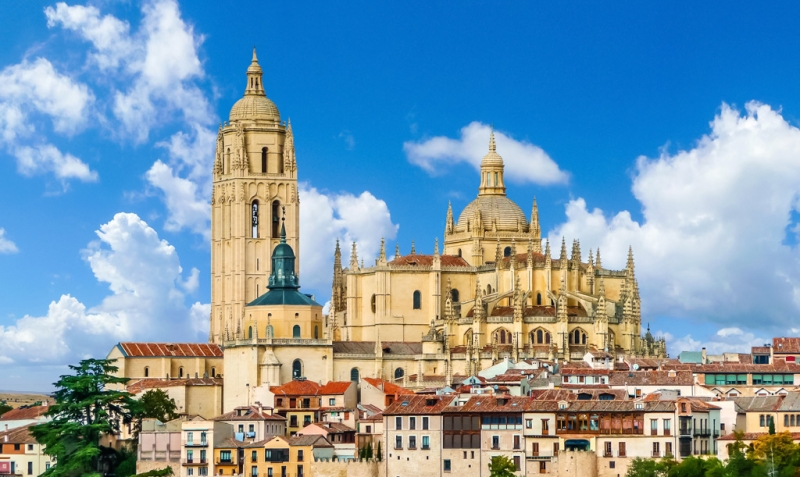
Information for tourists
Cost:
— General ticket costs 3 euros;
— On Sunday from 9.30 to 13.15 you can visit the cathedral for free.
What to see: Be sure to pay attention to the stained glass windows and wonderful vaults. Visit the chapels and local museum. Currently, photography is prohibited inside, but this rule is rarely enforced.
How to get there: the cathedral is located exactly in the middle between the aqueduct and the fortress. It is very visible and you are unlikely to get lost. But use this address as a guide: Calle del Marqués del Arco, 1.
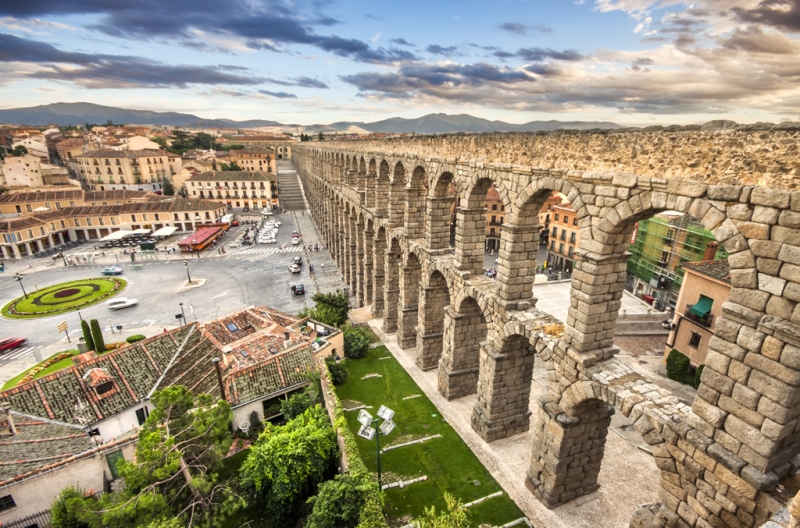
How to get to Segovia?
There are three ways to get from Madrid to Segovia:
— Intercity bus
Buses leave from the Principe Pio bus station (on the map) every 30-60 minutes. It all depends on the time of day. The bus station in Segovia is located near the historical center of the city. Very convenient for tourists.
— Train
There are two options: fast and cheap. You can take the high-speed ABE train from Estación de Atocha (map). Just 30 minutes and you are in Segovia. But the problem is that the train arrives at the Segovia-Guiomar station, which is located a few kilometers from the main attractions. Of course, there is a bus and a lot of taxis, but it’s still not very convenient.
But if you get to the Chamartín station in Madrid and take trains or electric trains on line C-8, the trip will take you a little longer, but all the fun will cost you about 6 euros one way .
— Car
— If you rent a car, you can get to Segovia using one of two toll roads (AR-6/AR-61) or a free one (A-1).
Author of the article: Mikhail Roskin

